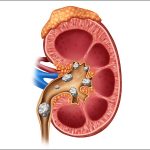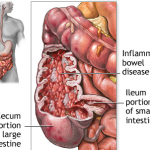
Dr. Maxwell Nartey
Professor of Symptometric Science, American School of Symptometry, NFP
Homosexuality is not a deviant lifestyle, a choice, or a pathology (disease). Also, it is neither a genetic defect nor a mutation. There have always been homosexuals on this planet. Let us calmly and intelligently understand why homosexuality occurs.
I am not a homosexual, but I studied homosexuality by applying my knowledge of the chromosomes, chromosome crossovers, thermal and nuclear energies, enzyme denaturing, enzyme production, endocrinology, and HDL (high-density lipoprotein) in order to explain homosexuality in a cogent manner.
Homosexuality is the direct result of testosterone/estrogen imbalance in the child’s nuclei; and this happened during the gestation period. The Y and X chromosomes reflect this imbalance; and it is a chromosome crossover that causes this imbalance. I will elaborate.
First, what is a chromosome? Simply put, a chromosome is transformed DNA. The twenty three chromosomes that are in a nucleus of a male or of a female, are DNA that transformed itself 23 times to produce 23 different chromosomes. Then, after serial transformation, DNA remained unchanged. During conception, there will be 46 chromosomes in a zygote (fertilized egg).
Second, what are genes? A gene is a sequence of DNA, meaning it derives from DNA. The 20 amino acids that make up DNA are identified by their sequence. Read Hole’s Human Anatomy & Physiology, seventh edition, page 119.
There are about 70,000 genes in each cell. Read Hole’s seventh edition, page 949. If about 75 trillion cells make up a human being, and there are 70,000 genes in each cell, how many genes are in a person? 70,000 x 75 trillion = do the math.
Basically, the genes that give instructions to DNA in our bodies are like sand on a beach. They are uncountable, and they are perched on the two arms of each of the 23 chromosomes in a nucleus.
The nucleus where the chromosomes, the genes and DNA are, is covered by an envelope. This envelope provides an enclosure that serves as the nuclear environment. There are rules governing the activities in every environment.
In the nuclear environment of a sex cell, heat must be maintained, and estrogen and testosterone must be balanced in the chromosome that is going to produce the child. The XY chromosome produces a boy and the XX chromosome produces a girl.
In order for hormonal balance to occur, estrogens and testosterone must not only be in equal amounts; they must also be strong enough to penetrate the nuclear envelope and remain in the nuclear environment. Strength is measured by the amount of force, power and pressure these two steroid hormones have.
If estrogens are weak, or there was not enough HDL to produce and strengthen them, there will be more testosterone in the female cells containing the XX chromosome.
Conversely, if testosterone is weak, or there was not enough HDL to produce and strengthen it, there will be more estrogens in the male cells containing the XY chromosome. A crossover will be imminent if there is more testosterone than estrogens, or if there are more estrogens than testosterone in the baby’s nuclei. It is the crossover that will cause homosexual propensities.
Ultrasound
16 to 20 weeks into the pregnancy, the baby’s genitalia would have formed, and ultrasound can be used to determine the baby’s gender. XY chromosome will confirm the baby as a boy, and XX chromosome will confirm the baby as a girl. Ultrasound cannot detect chromosome crossovers.
Since there is estrogen overload in the XY chromosome, or testosterone overload in the XX chromosome, one of two scenarios will play itself out.
Scenario 1
If 1) estrogens and testosterone are in a state of balance 2) there are no HDL antagonists in the nucleus, and 3) there are enough thermal and nuclear energies, a chromosome crossover will not occur. In other words, the XY chromosome or the XX chromosome will remain intact. As a result, there will be no homosexual propensities because the law of opposites will prevail. In other words, the boy will be attracted to girls or to women, and the girl will be attracted to boys or to men.
Scenario 2
However, if 1) enough nuclear and thermal energies are not in the nucleus, and 2) there is an HDL antagonist or several HDL antagonists in the nucleus, a chromosome crossover will occur. As a result, there will be a testosterone overload in the XX chromosome, or an estrogen overload in the XY chromosome.
Chances are, such a child will have homosexual propensities. Read Hole’s, seventh edition, page 954 for the diagrammatic representation of chromosome crossovers.
Definition of a crossover
A crossover is a situation where a testosterone/estrogens imbalance allows more testosterone to drift into the XX (female) chromosome to cause testosterone overload, or more estrogens to drift into the XY (male) chromosome to cause estrogens overload.
Basically, the male with more estrogens will have homosexual propensities, and tastes; and the female with more testosterone, will also have homosexual propensities.
Can a crossover be prevented? Yes, it can be prevented by knowing a lot about HDL antagonists and the importance of thermal energy in the nucleus.
Can a crossover be reversed? No, it cannot. Many diseases can be cured, but a crossover is not a disease. Therefore, it cannot be cured.
Application of a different law of physics
A chromosome crossover does not require the application of the law of opposites. It allows the other law of physics to prevail throughout the person’s life; and this law of physics is, likes attract likes.
The dominance of likes attract likes makes a female appeal to another female; and a male appeal to another male; and this law is set in stone. There is absolutely nothing a parent can do about it. Even the Creator cannot change it.
Can the chromosome of a bisexual be passed on to a baby?
There are women who are bisexual; and men who are also bisexual. If the zygote contains some bisexual chromosomes, chances are, there will be testosterone or estrogens imbalance. It is this imbalance that will cause a crossover. Therefore, the answer is yes, the chromosomes of a bisexual can be passed on to the baby.
However, if the woman does not want to have a homosexual child, she must know and follow the rules regarding HDL, HDL antagonists, and thermal and nuclear energies. This is how many women succeeded in giving birth to non-homosexual children.
Therefore, everything about pregnancy mostly depends on the woman.
Effect of the law of compensation
Likes attract likes comes with compensation. The estrogen/testosterone imbalance spurs the kind of compensation that makes most homosexuals kind, peaceful, sympathetic, and loving individuals.
Interestingly, the principle of likes attract likes does not only apply to homosexuals. It is a law in physics that also causes attraction between objects that share similar characteristics. Dr. Samuel Hahnemann (1755-1843) used likes attract likes to create a field of therapeutics called homoeopathy, which some people spell homeopathy.
Clinical tests
It is not clear whether a clinical test to predict a child’s natural propensities will ever be developed. This is because it may cause an avalanche of infanticides or aborticides.
Gene for homosexuality
Is there such a thing as a gene for homosexuality? No. Such a gene does not exist.
A gene plays only one role, and this role is to release the blueprint to DNA. A blueprint is a set of instructions about how rRNA should produce a brain essential or a body essential with the assistance of mRNA and tRNA.
No gene gives instructions on how to cause crossovers. A crossover is a chromosomal issue, not a genetic issue.
The procreation issue
Some men and women will have children; others will not. One does not have to be a homosexual to not have children.
I know men who cannot have children because they cannot ejaculate, and they are not homosexuals. Also, I know many women who cannot have children because they keep having ovarian failures or fertilization failures.
Why limit the inability to not have children only to homosexuals? Those who cannot have children can adopt children. Then, those who do not want to have or adopt children, should be free to live their lives the way they want.
Learned behavior
It is possible that homosexuality can be a learned behavior, especially if the person is extremely vulnerable and their mentor or their guardian is a homosexual with a lot of means and influence.
Therefore, there are two ways a person can become a homosexual: 1) chromosome crossover and 2) learned behavior.
© Copyright 2021, The American School of Symptometry, NFP. No part of this publication may be reproduced or transmitted in any form or by any means, electronic or mechanical, including photocopying, recording, or by any information storage and retrieval system without the written permission of The American School of Symptometry, NFP. Library of Congress copyright number Txu 1-621-370, Washington D.C.


 Previous Post
Previous Post Next Post
Next Post